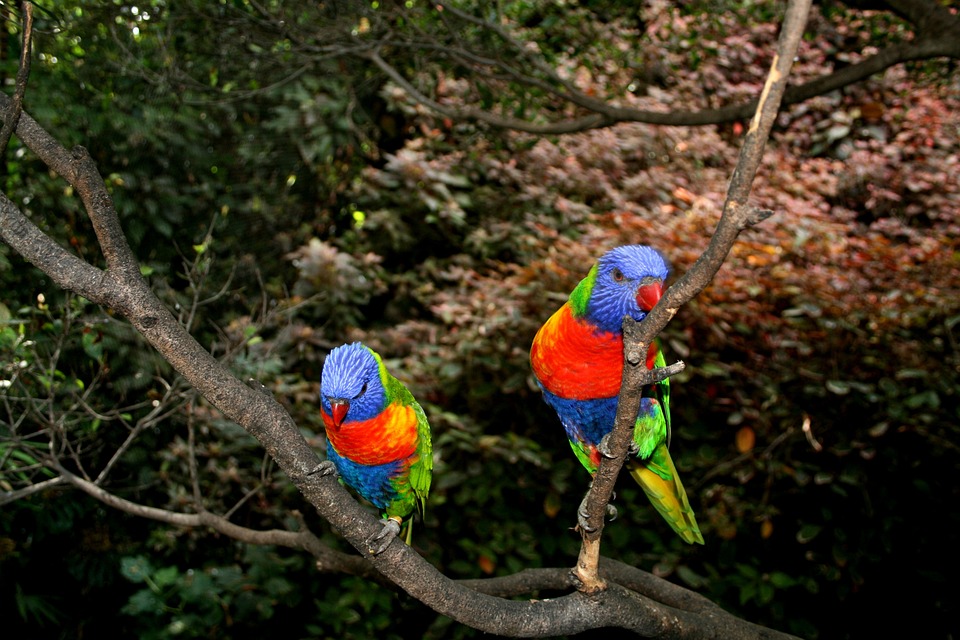Parrots are incredibly intelligent and social creatures with the ability to learn a variety of tricks and commands. Teaching your parrot unique tricks not only provides mental stimulation but also strengthens the bond between you and your feathered friend. In this article, we will explore the step-by-step process of teaching your parrot to take a bow or perform a curtsy, unlocking their hidden talents and potential.
Before we dive into the training process, let’s understand why teaching your parrot these tricks can be beneficial. Beyond the joy and entertainment value, here are a few key reasons why training your parrot to take a bow or perform a curtsy is advantageous:
1. Mental Stimulation: Engaging your parrot in training sessions keeps their mind active, preventing boredom and potential behavior issues.
2. Bonding Opportunity: Training creates a strong bond between you and your parrot, fostering trust and mutual understanding.
3. Communication Enhancement: Through training, you establish effective communication channels with your parrot, making everyday interactions smoother.
Now, let’s move on to the step-by-step guide for teaching your parrot to take a bow:
**Step-by-Step Guide: Teaching Your Parrot to Take a Bow**
1. **Establish Trust and a Positive Environment**
– Create a calm and quiet training space free from distractions.
– Use positive reinforcement techniques, such as treats or verbal praise, to reward your parrot’s progress.
2. **Introduce the Target Stick**
– Familiarize your parrot with a target stick by presenting it near their beak.
– Reward your parrot with a treat or praise whenever they touch the target stick with their beak.
3. **Lowering the Target Stick**
– Gradually lower the target stick towards the ground, encouraging your parrot to reach for it.
– Reward your parrot each time they lower their head in an attempt to reach the target stick.
4. **Introducing the Cue**
– Associate a verbal cue, such as “Take a Bow,” with the lowered target stick position.
– Repeat the cue each time you lower the target stick, reinforcing the association.
5. **Removing the Target Stick**
– Once your parrot understands the cue, gradually phase out the target stick, relying solely on the verbal cue.
6. **Reinforcing and Refining the Behavior**
– Continue practicing the cue and rewarding your parrot’s successful bowing.
– Gradually increase the duration of the bow and reinforce proper form for an impressive final result.
Now, let’s move on to the step-by-step guide for teaching your parrot to perform a curtsy:
**Step-by-Step Guide: Teaching Your Parrot to Perform a Curtsy**
1. **Establish Trust and a Positive Environment**
– Create a calm and quiet training space free from distractions.
– Use positive reinforcement techniques, such as treats or verbal praise, to reward your parrot’s progress.
2. **Introduce the Perch**
– Train your parrot to perch on your hand or a designated object.
– Reward your parrot with a treat or praise whenever they successfully perch.
3. **Lowering the Perch**
– Gradually lower the perch towards the ground, encouraging your parrot to move their leg in a curtsy-like motion.
– Reward your parrot each time they flex their leg while maintaining their balance.
4. **Introducing the Cue**
– Associate a verbal cue, such as “Curtsy,” with the lowered perch position.
– Repeat the cue each time you lower the perch, reinforcing the association.
5. **Removing the Perch**
– Once your parrot understands the cue, gradually phase out the perch, relying solely on the verbal cue.
6. **Reinforcing and Refining the Behavior**
– Continue practicing the cue and rewarding your parrot’s successful curtsy.
– Gradually increase the duration of the curtsy and reinforce proper form for an impressive final result.
Now, let’s address some frequently asked questions about teaching parrots tricks:
**Frequently Asked Questions (FAQs)**
Q1: How long does it usually take to train a parrot to take a bow or perform a curtsy?
A: The training duration varies depending on your parrot’s individual learning abilities and the consistency of training. It may take anywhere from a few weeks to a few months to achieve desired results.
Q2: Can any parrot learn these tricks, regardless of their age?
A: Yes, parrots of all ages can learn tricks with proper training techniques. However, younger parrots tend to learn faster due to their heightened curiosity and adaptability.
Q3: What if my parrot doesn’t seem interested in learning these tricks?
A: Ensure that your parrot is in a positive and receptive mood during training sessions. Modify the training environment and choose rewards that particularly motivate your parrot. If needed, consult a professional avian trainer for guidance.
Q4: Is it necessary to use treats for training?
A: While treats can be highly effective, some parrots may respond well to verbal praise or other rewards, such as favorite toys or head scratches. Experiment with different rewards to identify what motivates your parrot the most.
Q5: Can these tricks be harmful to my parrot’s physical health?
A: When taught and practiced correctly, these tricks are safe and promote physical coordination. However, always monitor your parrot’s comfort and consult a veterinarian if you observe any signs of discomfort or strain.
Now that you have a comprehensive guide on teaching your parrot to take a bow or perform a curtsy, it’s time to embark on this exciting training journey with your feathered companion. Remember, patience, consistency, and positive reinforcement are the keys to success. Enjoy the process and the incredible bond you’ll create with your talented parrot!









